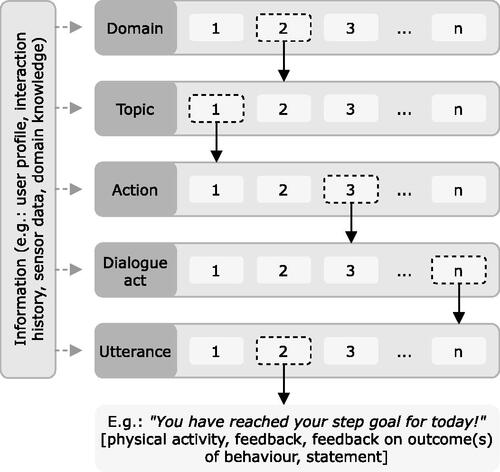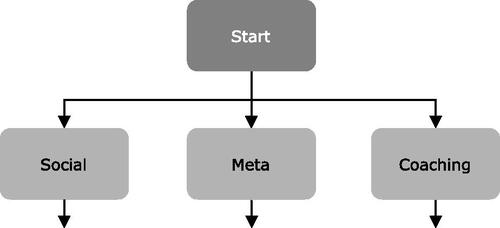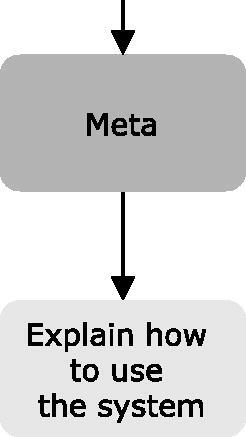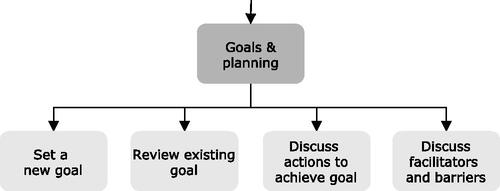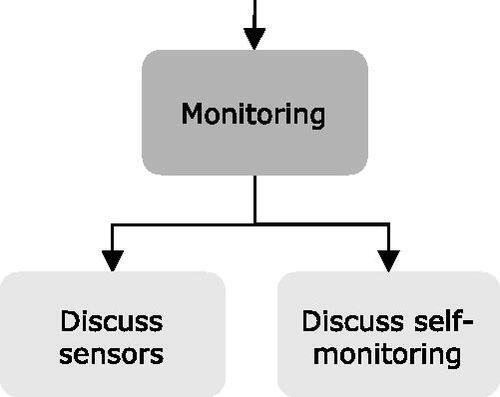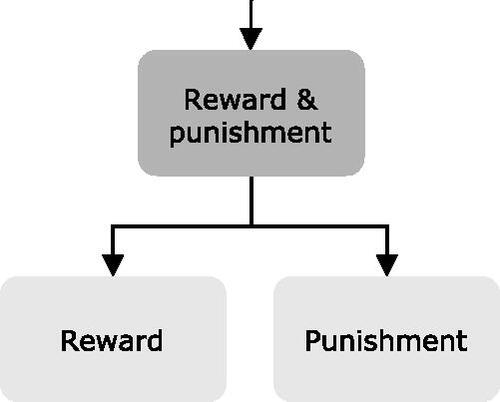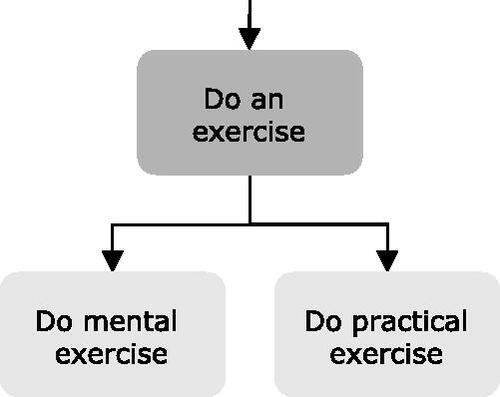Figures & data
Table 1. An overview of the referenced literature on tailoring and automatic dialogue or content generation.
Figure 2. The final version of the full topic model. The setup of the card sort pilot was based on the initial version of the model, which was adjusted following that pilot’s results as indicated by the asterisks. *The actions covered by the assist with sensor connection subtopic were initially a part of the discuss sensors topic, and the discuss coaching approach topic was initially a subtopic of coaching.

Figure 6. The subtopics for the coaching topic. *Please note that following the pilot study discuss coaching approach was moved to be a subtopic for the Meta topic.

Table 2. Number of cards and categories per round for the initial set-up of the card sort study as tested in the pilot.
Table 3. The precision and recall values for both experts for the three categories in the first round of the pilot study.
Table 4. Number of cards and categories per round for the final set-up of the card sort study.
Figure 12. An overview of the mean class-wise F1-scores for the six card sort rounds. N indicates the number of cards.
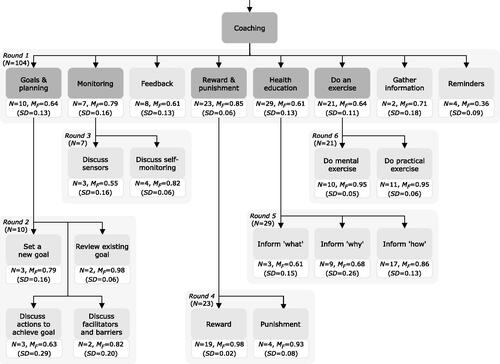
Table 5. Distribution of the percentage of correctly sorted cards per round according to the intended labeling, and the inter-sorter agreement (Krippendorff’s alpha).
Table A.1. An overview of the coaching actions that were defined based on the literature on relational agents and persuasive technology.
Table B.1. An overview of all defined ‘social’ topics, the descriptions added for the card-sort, and actions that contribute to their discussion.
Table B.2. An overview of all defined ‘meta’ and ‘coaching’ topics, the descriptions added for the card-sort, and actions that contribute to their discussion.

